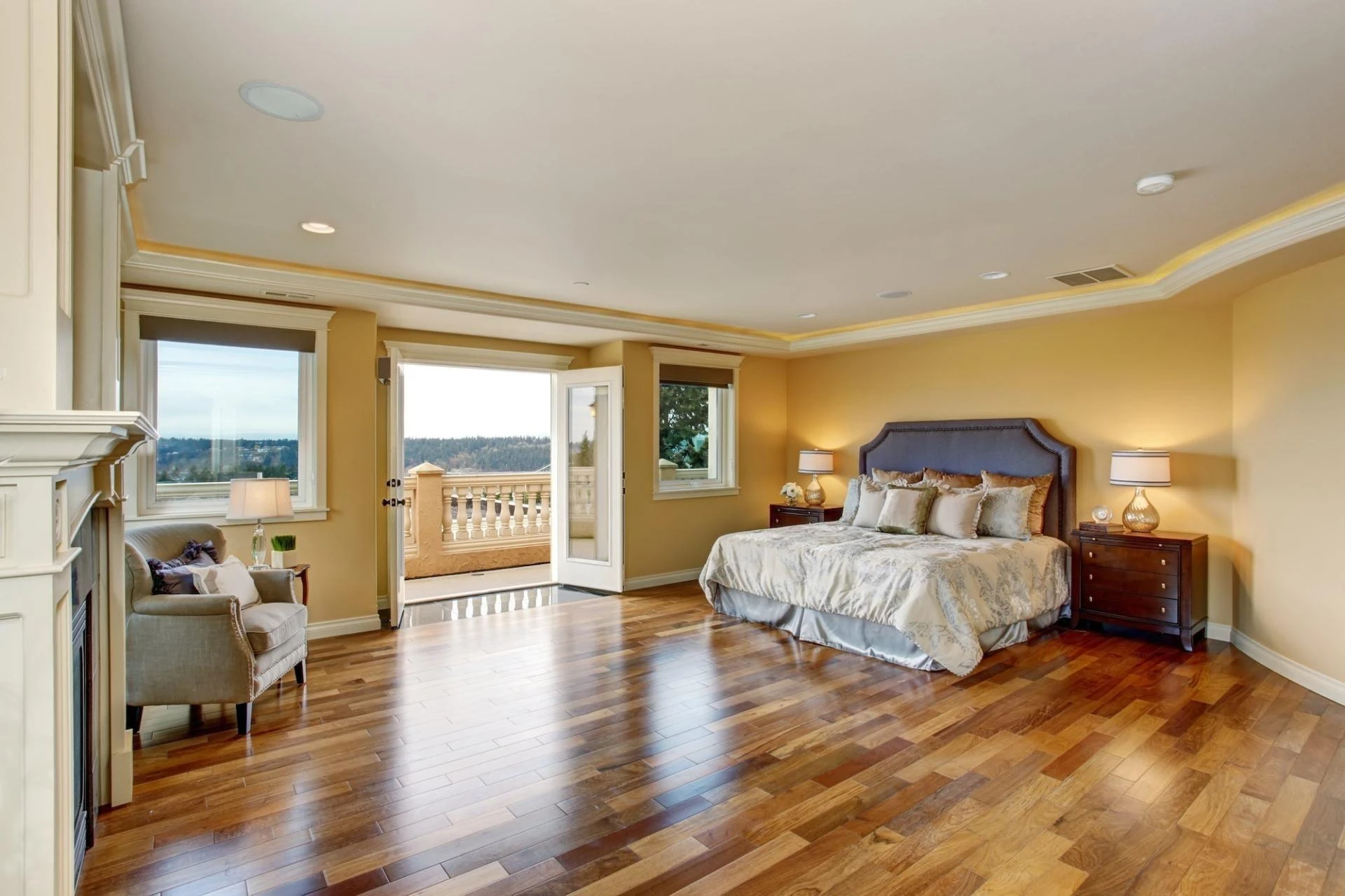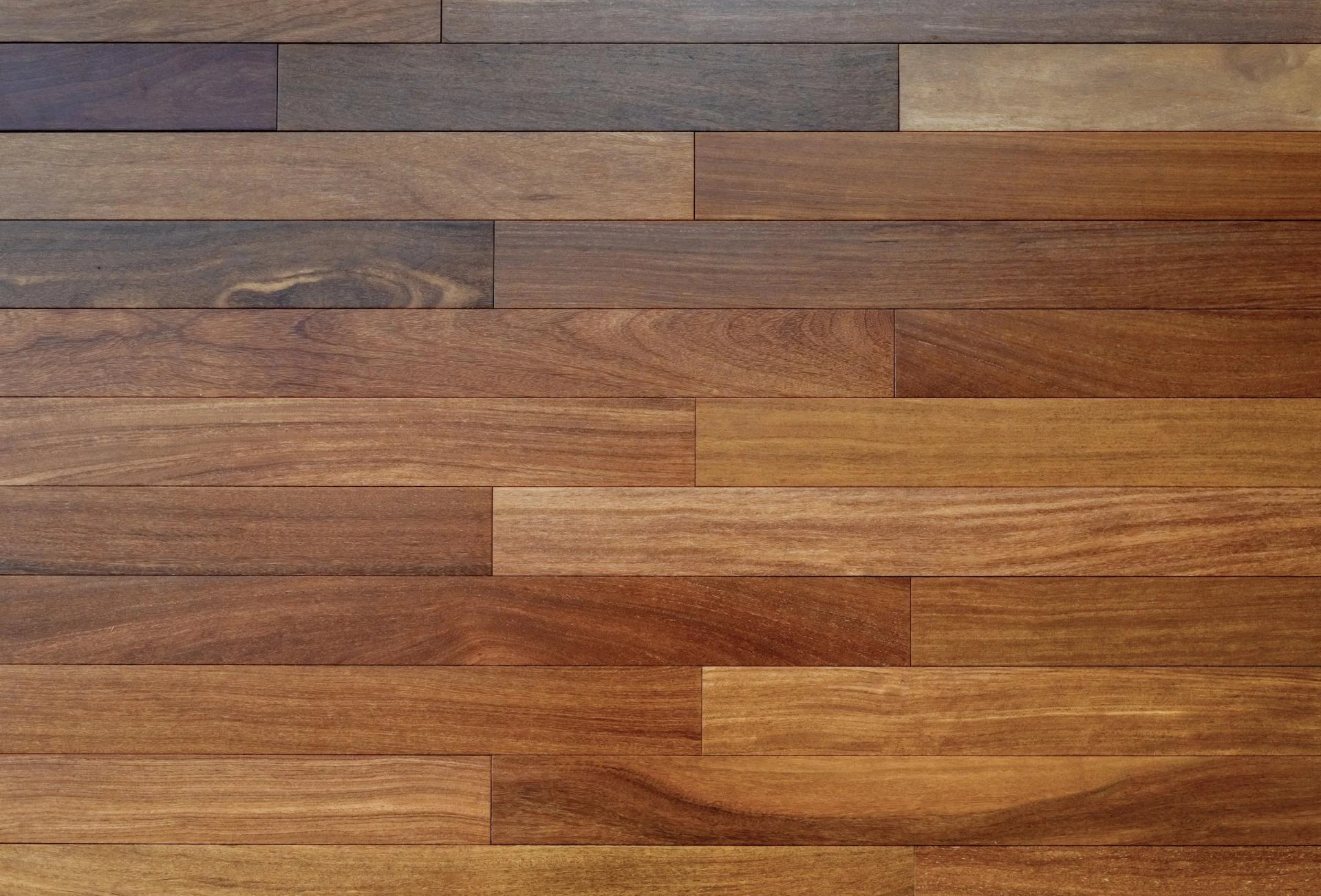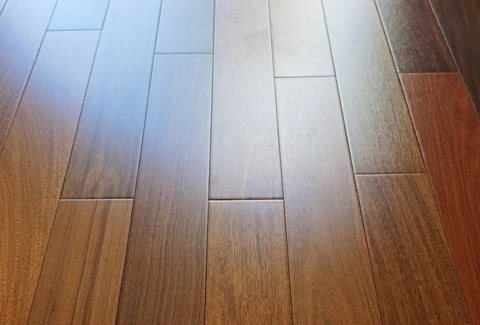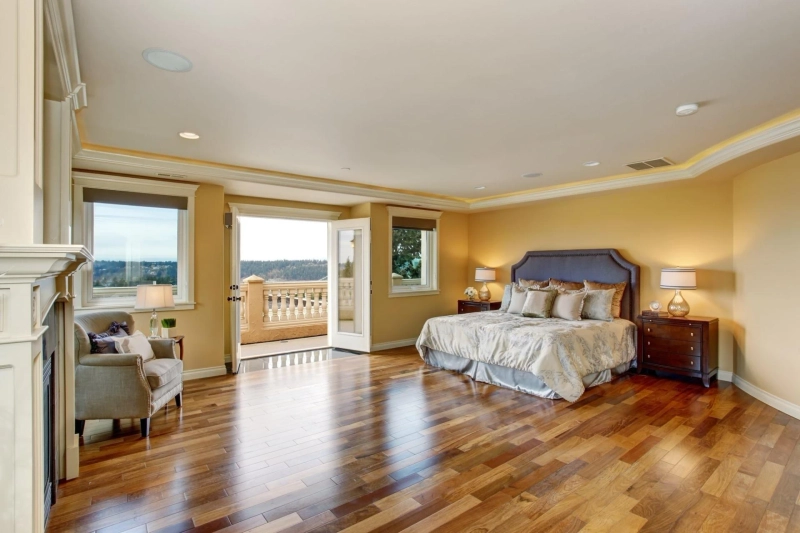Brazilian teak flooring pairs rich, exotic character with remarkable durability, making it a standout choice for homes and boutique commercial interiors that see everyday activity. Also known as Cumaru, this species offers deep reddish-brown to golden-brown tones and a fine, interlocked grain that matures gracefully over time while resisting dents and wear.
To many, it delivers the look of classic teak with a harder, tougher profile that performs exceptionally well in real life settings.
What Brazilian Teak Flooring Looks Like
Freshly milled boards of Brazilian teak flooring show darker bases with lighter streaks, then transition to a warm golden cast as sunlight mellows the color. The grain tends to be interlocked and tight, with a medium texture and a naturally smooth, slightly oily feel that adds visual depth. When a Brazilian teak floor is first installed, expect a richer tone that lightens in the first months as the finish and wood acclimate to light.
For designers comparing exotic options, a Brazilian walnut floor will skew deeper brown and sometimes near-black, while Cumaru typically shows more golden undertones as it settles.

Performance and Installation of a Brazilian Teak Floor
Brazilian teak flooring is celebrated for extreme hardness and stability, which helps it hold up in high-traffic zones and keep seams tight when acclimated well. Its density means careful planning: use sharp carbide tools, pre-drill for fasteners, and pair with adhesives made for dense exotics to ensure strong bonds. Water-based finishes are often preferred to maintain color clarity and reduce ambering, particularly when the goal is to highlight grain without warming the tone excessively.
For those weighing Brazilian walnut solid hardwood flooring as an alternative, note that both species are highly durable; the decision often comes down to tonal preference, tool readiness, and the desired feel underfoot.
- Use acclimation aligned with the space’s stabilized HVAC conditions.
- Choose moisture mitigation over concrete, then glue-down or nail-down by spec.
- Pre-drill fasteners and test adhesion on offcuts before full installation.

Care, Maintenance, and Real-World Longevity
Daily care is simple: trap dirt at entries, use felt pads under furniture, and dust-mop or vacuum with a soft head. Clean with a pH-neutral hardwood cleaner and dry promptly after damp cleaning. Because Cumaru is very hard, it does not need refinishing as often; a quick screen and a fresh topcoat can restore the shine without heavy sanding.
If comparing to a Brazilian walnut floor in kitchens and hallways, both options perform admirably with proper finish systems and good matting strategy.
- Place walk-off mats at exterior entries.
- Wipe spills quickly to protect finish integrity.
- Manage sunlight with sheers or films to moderate color change.
Installation Notes:
- Nail-down over plywood for classic feel and acoustic control.
- Glue-down with high-performance adhesive over slab, alongside moisture control.
- Always pre-drill; confirm bond and finish compatibility on scrap pieces.
Pros and Cons at A Glance
- Pros: Exceptional hardness, long service life, rich natural color, high resale credibility, and dependable performance in busy homes.
- Cons: Heavier boards, tougher machining, careful adhesive and finish selection, and a predictable color shift toward golden tones with light.
Pro Tip: Set expectations about the mellowing process up front; strategic rug rotation and window treatments help tone evolve evenly.
Product Listings and Key Specs
Use this checklist to narrow options before ordering samples and quotes.
Construction Types
- Solid Cumaru: Maximum refinishing potential and heritage-level lifespan.
- Engineered Cumaru: Multiply stability for wider planks and over-radiant installs, with wear layers from 2 mm to 6 mm.
Sizing and Visuals
- Plank widths: 4.25 in to 7.5 in suit most spaces without compromising stability.
- Lengths: Frequent 4 ft to 7 ft boards create natural flow and reduce repetitiveness.
- Grades: Select for cleaner patterns, character for varied color and lively figure.
Finish Systems
- UV-cured urethane in matte or satin for scuff resistance and low upkeep.
- Hardwax or natural oil for tactile warmth and spot-repair flexibility, with a more active care schedule.

Conclusion
For projects seeking enduring beauty, Brazilian teak flooring delivers standout hardness, refined grain, and a graceful color evolution that complements both modern and traditional design.
To compare curated options, secure samples, and get expert guidance from a team that understands dense exotics, explore Harper Floors and discover a Brazilian teak floor alongside a Brazilian walnut solid hardwood flooring choice tailored to your space.
FAQs
1. Is Brazilian teak flooring suitable for kitchens and entryways?
Yes. Its density and hardness resist dents and everyday wear; pair with the right finish, door mats, and prompt spill cleanup for best results.
2. How does it compare to a Brazilian walnut floor in durability?
Both are extremely tough. Walnut variants tend to read darker; Cumaru often feels slightly firmer underfoot and shows more golden undertones as it matures.
3. What finish works best on dense exotics?
High-quality water-based finishes maintain clarity and reduce ambering, while oil finishes offer a warm, low-sheen look with more frequent maintenance.



